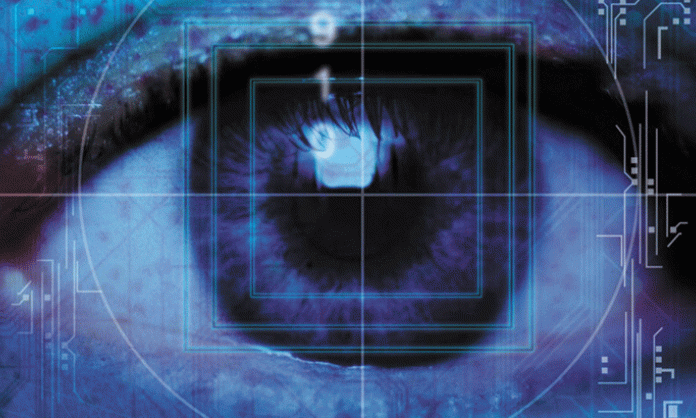“Boundless Informant” – the name says it all. This US government data-mining project, exposed by whistleblower Edward Snowden along with the PRISM project, gathers and sorts literally billions of pieces of data on us, enabling spy agencies to piece together our activities, associations and life patterns.
We’re still waiting to hear what part the Australian government has played in this vast operation. Information leaked by Snowden suggests that the facility at Pine Gap, the Shoal Bay Receiving Station near Darwin, the Australian Defence Satellite Communications Facility at Geraldton and the naval station HMAS Harman outside Canberra contribute to another NSA collection program codenamed X-Keyscore.
According to Fairfax newspapers, Australian agencies also accessed supposedly “private” phone and internet logs some 300,000 times in the past year.
In the US system exposed by Snowden, officials at least had to submit a (secret) request to a secret court in order to legalise their actions. Australian authorities don’t even have to do that; no warrant is required for this sort of snooping in Australia.
There is nothing new about Australian authorities being involved in massive spying operations, on both a local and international level. The purpose of these operations has always been to intimidate and to disrupt potential challenges to their rule, either from rival elites or from below.
In 1920, a couple of dozen activists formed Australia’s first Communist Party. According to historian Jude McCulloch, they quickly drew the attention of police from the Commonwealth Investigations Branch, with the chief of the CIB declaring that the “revolutionary incubus” was “now upon us, in our midst, threatening to engulf what remains of…civilisation”.
The wannabe Sherlocks of the Investigations Branch were somewhat shocked by the tiny size and ramshackle organisation of the Communist Party. Rather than concluding that the Party was simply small and ramshackle, they decided that this appearance was the front for a more sinister reality. They told their superiors that the Party was controlled by a secret clique they called “The Secret Seven”, who identified themselves with the password “kismet”, and who were behind almost every strike and demonstration in the country.
Such fantastic tales obviously helped to keep the funding flowing for spying: communists were a major target for surveillance and infiltration for the next half-century or more.
The political radicalisation of the early 1970s led to a concerted campaign against police spying in Australia. Activists including Victorian Labor MP Joan Coxsedge would hang around ASIO headquarters, taking photos of snoops who would then feature in posters put up around town. Activists also targeted the Australian government’s willing role in the global ruling class’s spying efforts, especially through facilities such as the joint US/Australian “listening post” at Pine Gap.
This campaigning was crowned with success in 1983, when the new Labor government in Victoria announced they were disbanding the state’s Special Branch. Almost ten thousand files that had been built up on unionists, socialists and all sorts of activists would be destroyed.
But the surveillance state is immune to such efforts at democratic control. In a series of exposés in the 1990s, it emerged that not only had Special Branch continued under another name, but that most of the old files had been photocopied before they were “destroyed”!
In 1997 The Age reported that Victorian police had systematically spied on more than 1,200 groups and individuals including the Young Christian Workers’ centre in Clifton Hill, the House of the Gentle Bunyip. Police agents had also infiltrated the annual Teddy Bears’ Picnic, a children’s party held every year by community-based childcare centres in Melbourne.
The surveillance state everywhere exists to keep the rich rich, the powerful in power, and the rest of us in our place. Hence the importance they put on monitoring and disrupting those who might remotely pose a challenge to our rulers – from the “secret seven” all the way to the teddy bears’ picnic.
After all, our rulers have no way of knowing which movements will fizzle, and which could mushroom into a significant challenge to their rule, the next global Occupy movement. Their preferred option, now made more possible by modern communications technology, is to monitor everything we do, “just in case”.
Sometimes the class role of surveillance is evident in where the resources go. Famously, as Mafia families carved up the streets of New York in 1959, the FBI’s New York office had over 500 agents assigned to spying on communists, while only five were assigned to monitoring organised crime.
More fundamentally, most of the appalling things that are done to ordinary people will never be subject to state surveillance and disruption, because they aren’t even counted as a “crime”. A bank foreclosing on a family’s home, a worker getting the sack because profits come before workers’ livelihoods, an entire country being trashed for the greater glory of oil and empire, or someone being forced off their land to make way for a mining company: all this is simply business as usual.
Rather than infiltrating corporate boards or bugging the corridors of power, the police and other snoops treat the existing power structure as sacred. And they treat as criminal, and subject to surveillance, any sort of activity that might disrupt the “order” that makes these obscene happenings an everyday reality.
This should make us angry, but it shouldn’t make us scared or downhearted.
The authorities’ vast efforts at surveillance, infiltration and disruption are actually incredibly unsuccessful in stopping mass social movements. Stumblebum coppers spied on and infiltrated the early Communist Party. But they couldn’t stop socialism from growing into an important part of Australian political life, which has played a key role in our unions and broader society for most of the past hundred years.
An army of spies and informants gathered information during the McCarthyist anti-communist witch-hunts in the US in the 1950s. But this didn’t stop the civil rights movement breaking through the repressive political atmosphere of the 1950s, or the radicalisation of the next decade.
And the most sophisticated systems of spying can’t save a ruling elite when its time has come. In the former Stalinist state of East Germany, the Stasi supposedly had more than one in seven of the population enrolled as informers. But when the regime entered a crisis and the mass of the population rose in revolt, this huge network couldn’t stop the dictators, their wall and their regime from being swept into the dustbin of history.
As the drawn-out economic crisis continues, our permanently paranoid ruling class authorises ever more grandiose efforts at spying on the rest of us. But history tells us that even the most boundless information won’t save them in the end.









